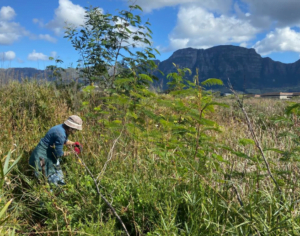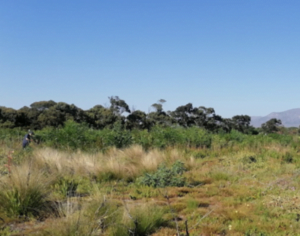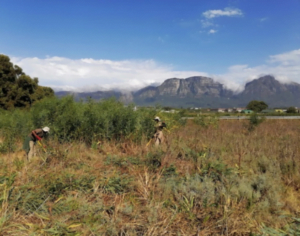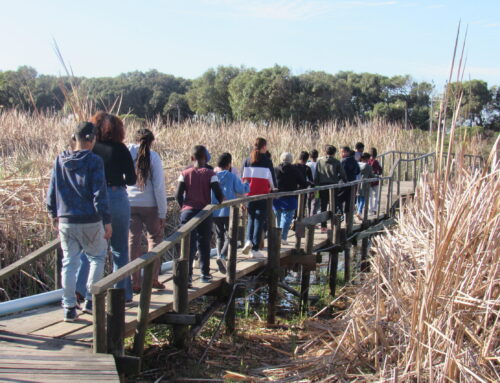Written by Lindile Masinyana, Site Manager – Kenilworth Racecourse Conservation Area
The Kenilworth Racecourse Conservation Area is a very special natural space. It contains the critically endangered Cape Flats Sand Fynbos, a habitat type that is adapted to acidic soils and has been highly transformed or lost to urbanization.
In 2021, a prescribed ecological burn took place that aimed to refurbish senescent vegetation and reduce the risk of species loss at KRCA. Three management units within an area of 16-year-old veld, totalling 21Ha was burned. Fire plays an important ecological role in the life cycle of Fynbos, and this is well understood and documented, based on research and outcomes of the previous fires. The objective of fire within a conservation area is to create a mosaic of vegetation age classes and successional stages within the landscape to maximise representation of species at any given time. This type of disturbance, however, gives rise to invasion from alien plants.
Invasive alien plants (IAPs) are plants that are not native to a specific area and these invasions pose a major threat to the country’s biodiversity. These plants reproduce and spread rapidly because they do not have natural enemies, taking valuable space and water for our indigenous plants. In South Africa, some alien plants were introduced accidentally, whereas most were intentionally introduced – for timber and firewood, as agricultural crops, to stabilise sand dunes, as garden ornamentals and for other purposes. The main problematic alien plants at the KRCA include (but are not limited to) Acacia saligna (Port Jackson), Acacia longifolia, Sesbania punicea, Paraserianthes lophantha and other herbaceous species. Most of these invaders produce an abundance of seeds that accumulate in the soil, for example the Australian Acacia species. Fires in fynbos stimulate these seeds to germinate in large numbers, which means that burning can dramatically increase the number of alien plants. Making alien clearing operations after fires of vital importance. For these operations to be effective, repeated and intensive follow-ups are needed. The team at KRCA has been regularly involved in clearing alien invasive species using tools such as bow saws, loppers and tree poppers.
Impacts of alien plants in Fynbos vegetation
- Invasive plants can burn with 10 times the heat of indigenous plants, destroying the fynbos seeds stored in the soil, which are adapted for release in low-heat fires. This intense heat also damages the burnt area’s soil structure.
- A. saligna in Fynbos communities induces a decline in plant diversity, especially in dense acacia thickets.
- A. saligna is a nitrogen-fixing tree that has negative ecological impacts such as changing the soil chemistry of an area it invades.
- A. saligna invasion changes overall soil characteristics, and especially elevated pH levels, which could pose a major threat to indigenous vegetation that is adapted to acidic soils.
Legislation
According to the National Environmental Management: Biodiversity Act 10 of 2004 (NEMBA), landowners are under a legal obligation to control IAPs (Invasive Alien Plants) that occur on their property.
The Alien and Invasive Species Regulations (AIS) of 2014 list four different categories of IAPs that must be managed, controlled or eradicated. The categories are:
- Category 1a: Most harmful species which requires immediate action to control and to eradicate. Any form of trade or planting is strictly prohibited.
- Category 1b: Invasive species that must be controlled and, wherever possible, removed and destroyed. Any form of trade or planting is strictly prohibited.
- Category 2: Invasive species or species deemed to be potentially invasive, for which a permit is required to carry out a restricted activity. This category includes commercially important species such as pine, wattle, and gum trees.
- Category 3: Invasive species that may remain in prescribed areas or provinces. Further planting, propagation or trade is, however, prohibited.
- Removal of Paraserianthes lophantha (Stink Bean)
- Before and during A. saligna clearing at 4A6 (Photo: L. Masinyana)
- Before and during Port Jackson clearing at management block 4F (Photo: L. Masinyana)









